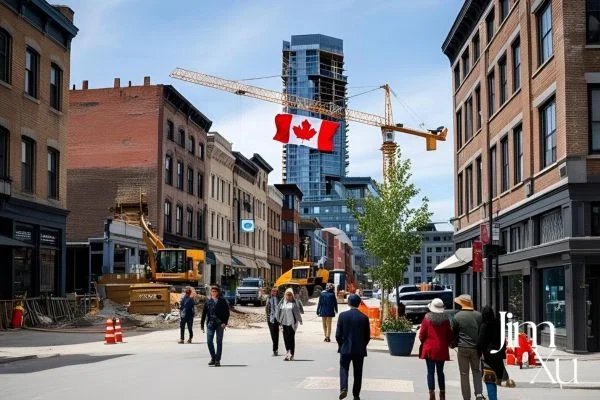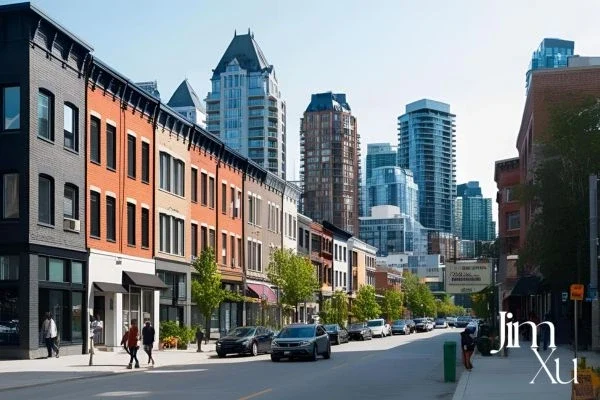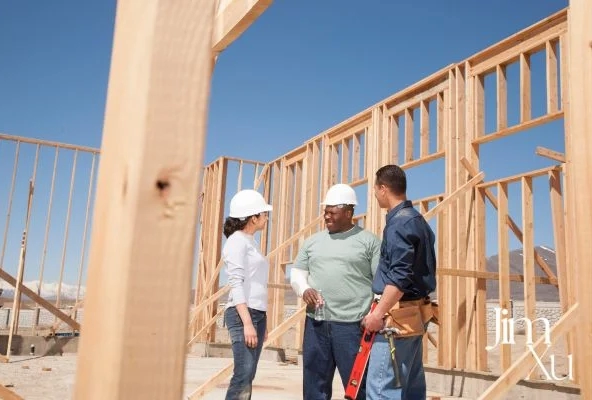Gentrification is a term that has gained a lot of attention in recent years, particularly in urban areas. But what exactly is gentrification, and how does it affect cities, communities, and the housing market? Whether you’re a prospective homeowner, a real estate investor, or just curious about how urban neighborhoods change, this article will break down what gentrification is and explore its benefits and drawbacks, particularly in the context of gentrification in Canadian cities.
What Is Gentrification?
At its core, gentrification refers to transforming a neighborhood or district, usually one that has historically been lower-income, into a more affluent area. This process often includes renovating old buildings, the influx of wealthier residents, and introducing new businesses and services. While these changes can bring about improvements, they also raise questions about the impact of gentrification on communities in Canada.
For instance, neighborhoods such as Toronto’s Regent Park or Vancouver’s Eastside have undergone significant transformations in Canadian cities over the past few decades. The question is: does gentrification benefit everyone, or does it come with some unintended consequences?

Read more: Average home price in Canada
Benefits of Gentrification in Canadian Cities
Although gentrification can have negative effects, many benefits for neighborhoods and communities undergo this transformation. In this section, we will explore some of the positive impacts of gentrification.
1. Neighborhood Revitalization
Neighborhood revitalization means making fundamental changes that improve the quality of life for its residents. This can include the arrival of new shops, cafes, and other businesses. In areas that previously faced vacant storefronts, gentrification can bring new life and resources to the neighborhood, creating a more vibrant environment.
2. Increased Property Values
One of the biggest advantages of gentrification is the increase in property values. As old buildings are renovated and neighborhoods improve, property values rise. This is beneficial for homeowners and residents who can sell their properties at a higher price. Additionally, increased property values often result in higher local tax revenue, which can be reinvested into public services and infrastructure improvements.
3. Economic Growth
Gentrification can stimulate economic growth by attracting new businesses to the area. These new businesses can create job opportunities and improve the overall economy of the neighborhood. Additionally, construction projects and renovations create employment in sectors such as construction, services, and retail, driving economic revitalization in the area.
4. Improved Infrastructure
Gentrification typically leads to improvements in a neighborhood’s infrastructure, such as new roads, sidewalks, and buildings. These upgrades create a cleaner and more modern living environment for residents.
5. Lower Crime Rates
In many cases, gentrification can contribute to lower crime rates in neighborhoods. This is often due to increased investment in policing, community engagement, and local infrastructure. For example, studies have shown that crime rates in areas undergoing gentrification can decrease by up to 16%, making the neighborhood safer for residents and businesses.
6. Diverse Dining and Entertainment Options
As gentrification takes hold in a low-income neighborhood, residents often see an influx of new restaurants, stores, and entertainment options. This provides locals with more places to shop, dine, and socialize, contributing to a more vibrant and diverse community. As businesses attract more visitors, they can adjust their offerings to increase revenue, benefiting the local economy.
7. Environmental Improvements
In addition to bringing in trendy businesses, gentrification can lead to adding green amenities such as community gardens, parks, and energy-efficient buildings. These improvements not only enhance the neighborhood’s aesthetic appeal but also create a healthier environment for residents.
8. Preservation of Historic Architecture
Gentrification does not always involve demolishing every building in a neighborhood. When done thoughtfully, developers and city planners can restore old homes and preserve the historic architecture of a neighborhood, which helps maintain its original character.
Read more: What is the Possession Date

Also See: North Vancouver Condos
Drawbacks of Gentrification in Canadian Cities
While there are numerous benefits, gentrification also has significant drawbacks, especially for long-term residents who may feel displaced by the changes. In this section, we will examine some of the negative aspects of gentrification.
1. Displacement of Long-term Residents
Displacement is one of the biggest downsides of gentrification. As rents and property values rise, many long-time residents who can no longer afford the increased costs are forced to relocate, often to areas far from their community. This is a major concern when it comes to the impact of gentrification on communities in Canada, where residents may be displaced from areas that have long been home to them.
2. Loss of Affordable Housing
In some cases, developers and city planners demolish affordable housing complexes to make room for new developments. Even if affordable housing units aren’t demolished, landlords may raise rents to levels that low-income residents can no longer afford.
3. Increased Cost of Living
One of the most significant drawbacks of gentrification is the increase in the cost of living. As new luxury buildings and trendy stores move in, the cost of housing and basic goods like food rises, making it difficult for long-time residents to afford living in their neighborhoods.
4. Socioeconomic Disparities
While gentrification may create opportunities for diverse communities, it often increases socioeconomic disparities. Rising property values and rents can force low-income residents out. At the same time, local businesses may adjust their offerings and raise prices, making the area unaffordable for those who once lived there.
5. Loss of Small Businesses
Gentrification can lead to the closure of small businesses as larger chain stores move in to cater to the wealthier new residents. Many local shops, often run by underrepresented community members, may struggle to survive in the face of rising rents and competition from big corporations.
6. Reduced Diversity
Gentrification often leads to a reduction in diversity. Originally, many low-income areas were home to Black, Latino, or immigrant communities. As wealthier residents move in, the neighborhood becomes less diverse, leading to a shift in the cultural and demographic makeup of the area.
7. Increased Homelessness
As mentioned earlier, gentrification can contribute to increased homelessness. When low-income residents are displaced and housing becomes less affordable, some may end up without a place to live. The demolition of older buildings often forces people out, and many cannot find affordable alternatives, leading to homelessness.
8. Strain on Public Services
The increased demand for housing, healthcare, and other services in gentrified areas can strain public services. More people being displaced and requiring support means local governments may face difficulties providing adequate services like shelters, food assistance, and healthcare.
Read more: Where to Buy Real Estate in Canada

Gentrification in the Housing Markets in Canada
For those looking to invest in real estate, understanding the impact of gentrification on housing markets in Canada is crucial. Gentrification can present lucrative opportunities for homebuyers and real estate investors, particularly as neighborhoods become more desirable.
However, it’s important to be aware of the potential risks. As property prices rise, so does the competition for available properties. Gentrification effects on the housing market in Canada can sometimes lead to bidding wars, particularly in cities like Toronto and Vancouver, where affordability is already a major issue.
What Should Buyers Know About Gentrifying Neighborhoods?
If you’re considering purchasing property in a gentrified neighborhood, here are a few key factors to keep in mind:
- Research the area thoroughly: Understand the potential for growth and the risks involved in buying property.
- Evaluate future developments: New projects can increase the neighborhood’s value but may also lead to further displacement of residents.
- Consider long-term investment potential: Buying in a gentrified area can often lead to strong returns.
Read more: How to buy a home in Canada
How Gentrification Shapes the Future of Canadian Cities
In the coming years, the trend of gentrification is likely to continue in many Canadian cities. While gentrification improves infrastructure and boosts local economies, it raises concerns about affordability and social equity.
For communities undergoing gentrification, the challenge lies in balancing the benefits of urban revitalization with the need to protect affordable housing options and support the long-term residents who helped build those neighborhoods.
Also see: Duplex In Richmond
Want to Explore Gentrifying Neighborhoods in Canada?
If you’re considering purchasing a home in a rapidly changing area or want to learn more about gentrification effects on housing market in Canada, contact Jim Xu today! Whether you’re looking to explore listings in Toronto, Vancouver, or any other city, we’re here to help you make an informed decision. Contact us now to schedule a viewing or discuss your real estate needs!






